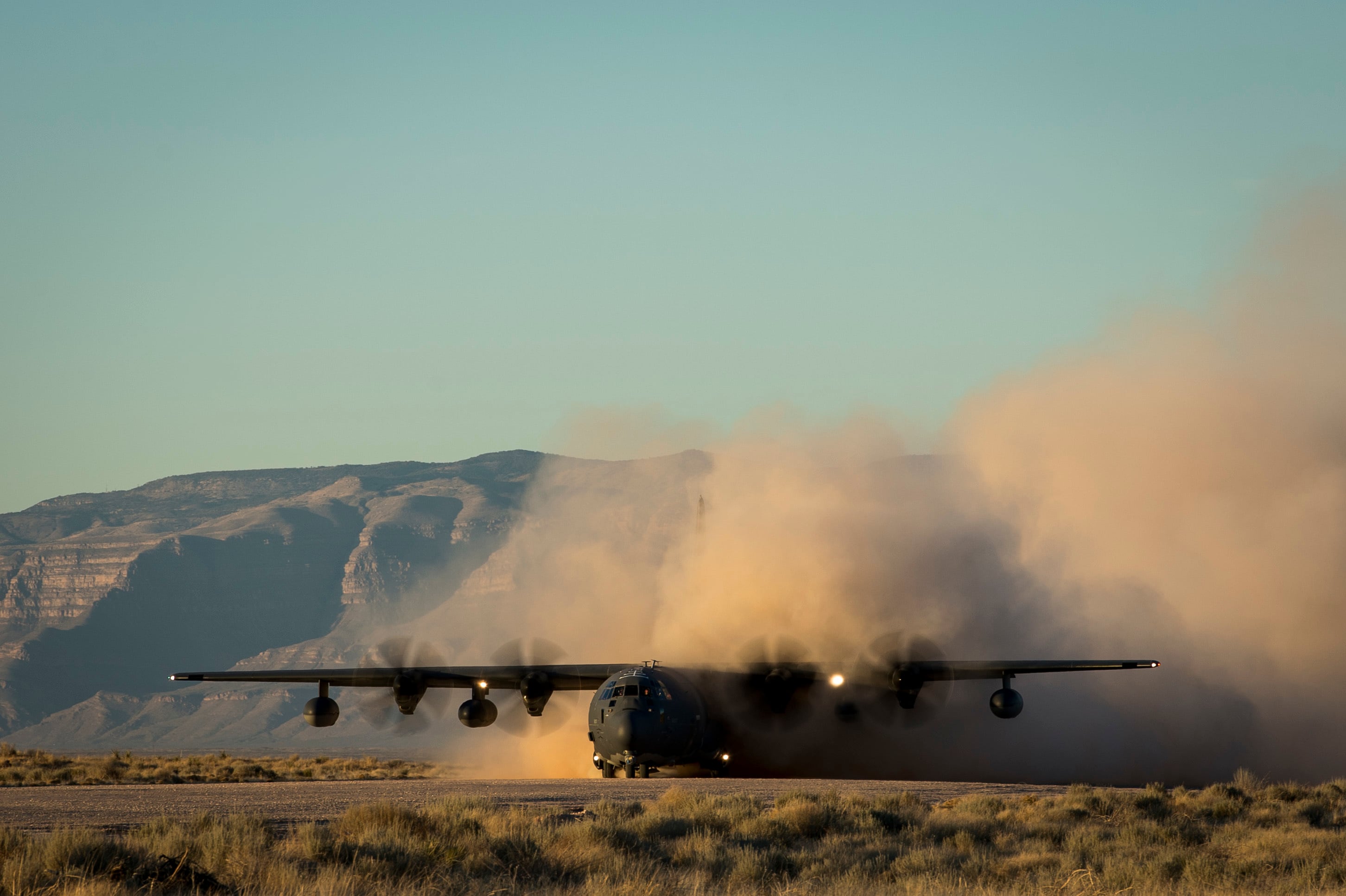Two A-10 Thunderbolt II pilots received Distinguished Flying Crosses earlier this month for their heroism in the air during separate battles against the Taliban years ago.
Lt. Col. Tony “Crack” Roe and Maj. John “Sapper” Tice, both flight commanders with the 303rd Fighter Squadron, were recognized during a Nov. 2 ceremony at Whiteman Air Force Base in Missouri for their roles during the 2008 and 2010 missions.
“This is an incredibly unique and rare event,” Lt. Col. Rick Mitchellm commander of the 303rd, said at the ceremony, according to a Tuesday release from the Air Force. “Very rarely is the Distinguished Flying Cross awarded. Even more rarely is the Distinguished Flying Cross awarded twice in the same day to two members of the exact same fighter squadron.”
Roe received this DFC with a Valor citation — his third DFC — for flying a mission out of Bagram Airfield, Afghanistan, on June 5, 2008, to support an Army resupply convoy southwest of the base.
The soldiers were in a dire situation. Three of the convoy’s eight vehicles had been disabled by rocket-propelled grenade fire and they were pinned down. Before Roe and his wingman arrived, the soldiers were even down to their last clip of ammunition and making plans for a last-ditch charge to take the hill from which the Taliban was attacking them.

Roe and his wingman spotted the two sets of four vehicles on a road in the mountainous area and contacted one platoon’s leader over FM radio. Roe asked the soldiers in one convoy fighting the Taliban to mark the target. They threw out a smoke grenade, which landed on the hillside and rolled back down to their position.
“Next thing we hear is, ‘Do not shoot that smoke,’” retired Brig. Gen. James Mackey, who was Roe’s wingman that day and attended the award ceremony, said in the release. “We figured that out.”
The troops threw another marker about two-thirds of the way up the ridge line, this time landing on target. Roe and the platoon commander made sure friendly troops were not in harm’s way, and then he declared an Emergency Close Air Support situation, taking full responsibility for what was about to happen. At Roe’s command, the soldiers took cover inside their vehicles.
Roe opened fire with the Warthog’s feared 30mm cannon — but the shots missed their mark. Something was wrong with the elevation on his targeting system and the rounds went over the target. So, he manually corrected the elevation, Mackey said, and on the next pass fired seven rockets at the enemy — about 40 meters away from the American soldiers — and the fighting stopped.
The battle lasted more than an hour, the Air Force said, and Roe and Mackey arrived just in time to save the lives of 16 soldiers.
Two of those soldiers, Mauricio Arias and Joseph Parker of the 201st Engineering Brigade of the Kentucky Army National Guard, attended the ceremony at Whiteman, and received a standing ovation when Mackey asked them to stand and be recognized.
RELATED

Tice’s moment of bravery came more than two years later, on Dec. 2, 2010. He flew out of Kandahar Air Base in Afghanistan to support two Special Forces teams, who themselves were safeguarding Army engineers building a bridge in the Helmand River valley. The teams consisted of 50 Marines, 24 Green Berets and one airman serving as their joint terminal attack controller.
“The area was known for hostile Taliban fighters and they routinely came out to attack U.S. coalition forces,” Mitchell said.
While keeping watch over the area at the beginning of the sortie, Tice spotted a Taliban scout monitoring the soldiers’ positions. Tice alerted the JTAC on the ground, and the Joint Special Forces took out the scout.
But then, Taliban fighters hidden nearby sprung an ambush. The unleashed a barrage of RPGs, heavy machine gun fire, and small-arms fire and the battle erupted within seconds.
Tice swung into action. He dove low, within range of the small-arms fire and putting himself at risk “without regard for his own personal safety,” the Air Force said.
He conducted six low-altitude passes, targeting Taliban fighters at four different positions with 1,140 rounds from the 30mm gun. Tice killed 32 enemy combatants, and saved the lives of 75 U.S. troops, the Air Force said.
The DFC is the Air Force’s fourth-highest medal for heroism in combat, behind only the Medal of Honor, the Air Force Cross and the Silver Star.
“I’m humbled to be amongst these two,” Col. Mike Schultz, commander of the 442nd Fighter Wing, said. “I don’t feel quite adequate for even touching the medal. It’s that big of a deal. Sapper, Crack, brothers, well done.”
Stephen Losey is the air warfare reporter for Defense News. He previously covered leadership and personnel issues at Air Force Times, and the Pentagon, special operations and air warfare at Military.com. He has traveled to the Middle East to cover U.S. Air Force operations.





